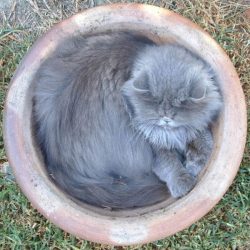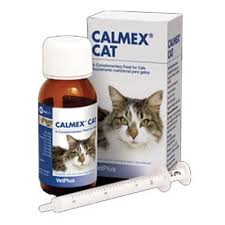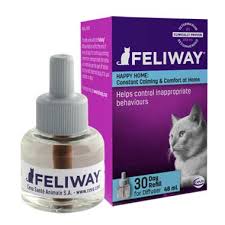Winter Is Here!
While we don’t have snow in Northland we still have cold wind and plenty of rain.
Cats are usually smart enough to find the warmest spot indoors. Cozy igloos have become popular recently – cats love snuggling into them. If your cat goes outdoors ensure they can get back in via a cat door, or have access to safe shelter for them outdoors.
In the cooler months in particular, a cat may find shelter under the rim of your vehicle or even up under the bonnet when the motor has been warm. Always bang on your bonnet before starting the engine to give an unsuspecting cat the chance to get away.
Cats can be lazy and reluctant to leave the warmth of the indoors to toilet. Have litter trays available indoors to make toileting easy for them (one per cat plus one). This will help prevent the urinary issues we see more frequently in winter months.
Arthritis affects both cats and dogs. If you notice they are stiff when they walk or have more difficulty getting up arrange a health check and we can help find a solution so your pet is more comfortable. Old age doesn’t mean your pet has to suffer.
Outdoor dogs need their kennels sited in sheltered locations. Whether indoors or out, your dog will appreciate a thick mattress and warm bedding, especially as they get older.
Jumpers and jackets aren’t just about fashion! Dogs that have thin coats or are elderly will enjoy the comfort of a warm cover. A rain jacket will save time drying your dog after walking in the rain. Even though it is dark in the morning and evenings your dog still needs to exercise. Try a head lamp for walking in the dark – it is very difficult to use a “poo bag” with a torch in one hand! There are reflective jackets and collars available that light up meaning you can see your pet easily.
Be aware of the dangers of heaters and fires in the home. Pets may get too close as their thick fur provides insulation initially and they may not realise they are close enough to get singed. As with children’s clothing, pet jumpers and bedding can be flammable.
Rats and mice are attracted to warm homes and sheds. Take extra care with rat baits as they are also appealing to our dogs. While you can place the bait out of reach the rats can still carry and drop pieces. If rat bait is eaten arrange to come straight in so we can make your pet vomit.
Never leave your pet in a parked car. Even in winter the temperature can climb rapidly if the sun comes out.
We are seeing a few unplanned pregnancies at the moment. If you have no plans to breed, now would be a good time to spey/neuter your pet to prevent the complications of an unplanned litter. If you do plan to breed research thoroughly before hand and arrange a health check with your vet before you proceed.
As always, a reminder about treating for fleas – with our mild climate fleas thrive all year around. Continue to treat with a quality product at the recommended intervals to prevent a massive infestation in spring.
Feline Toileting Traumas:
Why Does My Cat Toilet Indoors ?
Toileting indoors, or house soiling, is one of the most common feline behavior problems we see. It is very frustrating and can be so bad it can lead to untimely euthanasia in persistent cases. Two expert bodies, the American Association of Feline Practitioners and the International Society of Feline Medicine, have produced guidelines to help understand and manage this important condition.
Any toileting is deemed inappropriate if it is not in the place the owner expects! It may be outside a provided litter tray or inside if the cat is supposed to go outside. Some cats will “spray “urine inside. Some individuals may have always done it but most commonly it will be a relatively recent event. The longer the habit goes on the harder it is to reverse.
There are many reasons why a cat may house soil. To complicate things, there may be multiple causes. A careful veterinary examination and history is necessary to unravel the story. Causes include:
- Medical reasons: bladder stones and infections, kidney or thyroid disease, diabetes or arthritis.
- Feline idiopathic cystitis. This is when the bladder is inflamed causing symptoms of straining to toilet and blood in the urine.
- Marking behaviour.
- Social or environmental problems resulting in an unhappy cat!
Medical problems may need further tests to investigate and receive appropriate treatment. For example an arthritic cat may be unable to use a cat-flap or get inside a high sided litter tray. Idiopathic cystitis is a common and incompletely understood condition. It is painful and can be life-threatening in the male cat where the urethra is narrow and can block. Usually blood in the urine and frequent unproductive squatting is noticed. Some cats vocalise a lot. If you encounter these clinical signs contact your vet clinic immediately!
An unhappy cat is a stressed cat. This can contribute to house soiling and idiopathic cystitis. We have to meet a cat’s physical, emotional and health needs to reduce unwanted behavior. So we need to change the environment (the cat’s home) into a more secure, cat friendly space.
Litter trays can be a source of stress for an indoor cat. No-one likes a dirty toilet. Most cats will refuse to use a tray if it is already soiled, or if another cat uses it.
It is important to provide the right cleanliness, number, size, location and litter material for the litter tray.
The Best Litter tray…
Here are some research findings that will please most cats… This is particularly important if your cat is toileting outside its tray or has the condition idiopathic cystitis.
- Cleanliness: Guidelines recommend scooping daily and replenishing material as needed. Some experts even recommend scooping every 2 hours or after every use. Not all of us can do this , so provide multiple trays. Wash all litter trays with hot soap and water weekly.
- Number: There should be more litter trays than the number of cats in the household. So litter trays = number of cats +1!
- Size: Bigger is better! The tray should be 1.5 times the length of the cat from nose to tail. In one study most cats preferred a tray 86x39cm over a smaller one. DIY stores may have plastic storage boxes or containers you can modify if the pet shop doesn’t have a big enough tray. Most litter trays are designed for kittens and are too small for adults.
- Location: Avoid placing food and water near the tray. It should be in a quiet, safe area. The cat may feel insecure if the tray is too close to the cat flap where next door’s cat stares in. Have trays in several areas rather than in one area.
- Litter material: Many cats have a preference: wood pellets, paper based or clay. Some will only use outdoor materials like sand, soil or garden mulch. Use a generous amount of litter. And most hate deodorizers! Tray liners are not advised.
If your cat is not digging in the tray before toileting, or stands with the paws on the edge of the tray, in a large box, then the material used could be the problem. Experiment with different types so you know your cat’s preferences.
Five Pillars Of A Healthy Feline Environment
These guidelines are a summary provided by the American Association of Feline Practitioners and the International Society of Feline Medicine. They are recommended for all cats, but especially those with stress related conditions like idiopathic cystitis and house soiling.
A safe place to hide in case of danger: A cat needs a vertical escape route in case of perceived threats. If elderly/arthritic or three-legged a ground level “hidey hole“ as simple as a box or back of wardrobe will be adequate. A sense of “safety” is enhanced
Multiple amenities: plenty of food, water, scratching and play areas, access to outdoors and sleeping places: This avoids competition between cats. Water and food should be in separate areas. Keep litter trays away from food/water locations.
Provide plenty of opportunity for play and “hunting”: Boredom stresses cats! While we may not be keen to encourage real hunting, there are plenty of toys and activities that help engage those instinctive behaviours. There are lots on the market- food balls and puzzles as well as laser pointers!
Regular positive, consistent human-cat social interaction: Most cats, if handled well from young kittens, enjoy gentle and friendly stroking and petting. The cat should be allowed to initiate when the attention starts and finishes. Too little or intensive petting may contribute to stress! Cats vary a lot in the amount of attention they want –some are relatively aloof and others would sit on your lap all day.
Smell and the home environment: Odour and the sense of smell is one of the main ways cats assess their surroundings. It gives them comfort and security. Anything new like clothing and furniture, or with an odour like detergents, bags from outside and food can led to anxiety related problem behaviours like spraying. This is the cat’s way of making the new object and its smells blend into its home environment. It is important not to punish your cat for house soiling.

Feliway is a pheromone or cat scent product that helps to de-stress cats through their sense of smell. It can take a month or two to see an effect .
Calmex Is an oral liquid medication. It contains L-tryptophan, L-theanine, Kavalactones, Piper methysticum and vitamin B complex. L-tryptophan is the calming neurotransmitter and a precursor of serotonin. L –theanine is found in green tea, Piper methysticum is a calming herbal plant as is Kava.

